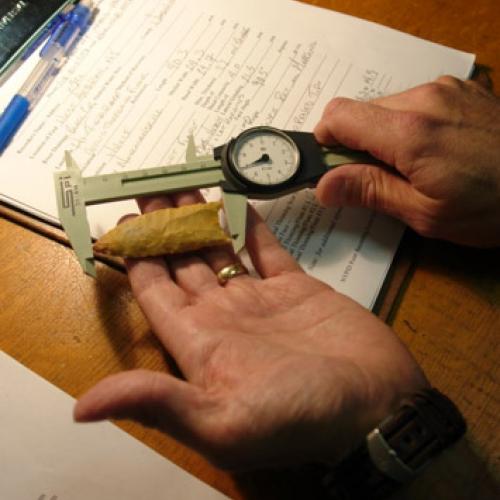As part of ongoing research on Native American adaptations during the Late Pleistocene and Early Holocene in New York, the NYSM has renewed its commitment to the statewide Paleoindian point survey. To all members of the NY State Archaeological Association and others interested in New York prehistory, please help us systematically record data on Paleoindian fluted and lanceolate projectile points for the NYPID Project.
The New York Paleoindian Database Project (NYPID)
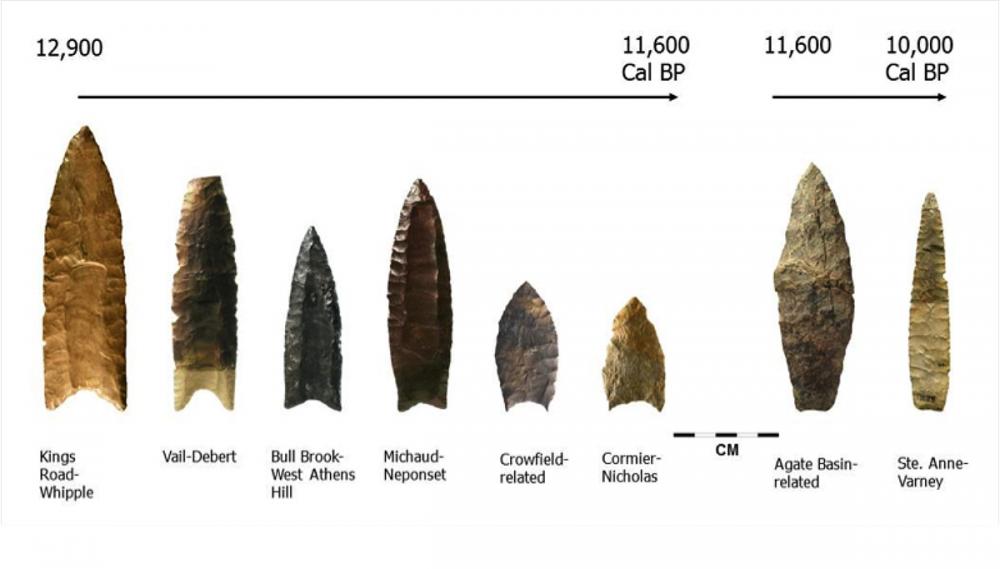
Chronological sequence of Paleoindian points for eastern New York and the New England-Maritimes, 13,000-10,000 years before present.
To help contribute to the NYPID Project, review the sections II and III below.
Section I: Background Information
NYPID -- it's not a state agency -- it's a research project!
Our goal is to compile information and digital photographs of artifacts left behind by the first peoples of New York.
Beginning in the 1950s, New York State Museum archaeologists began systematically recording discoveries of Paleoindian points and sites, first, by Dr. William A. Ritchie, and later by Dr. Robert E Funk and Beth Wellman. Mapping of these early finds showed that fluted bifaces clustered in the Hudson and Susquehanna valleys, the Ontario Lake Plain, and other parts of New York, suggesting travel corridors and key resource areas for Paleoindian populations.
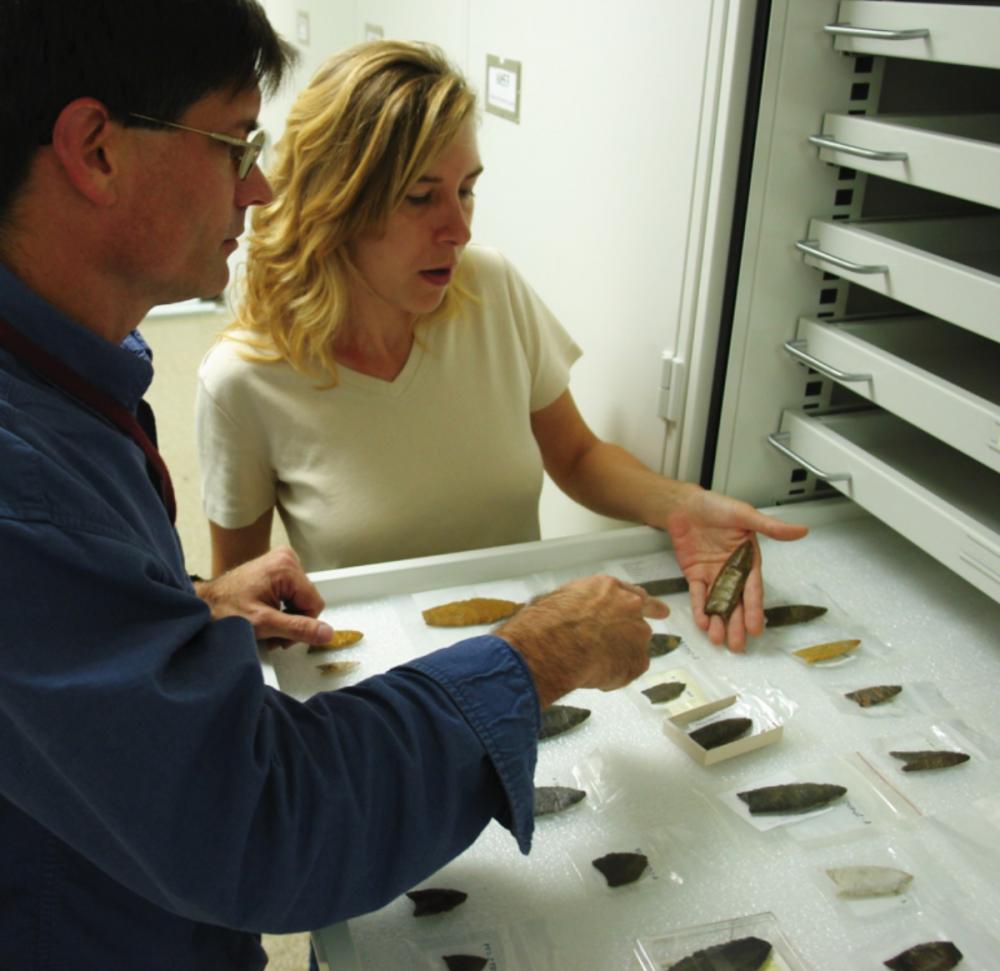
Examining Paleoindian points in the New York State Museum
Statewide Paleoindian point surveys are not new, but archaeologists are increasingly using these data as another tool for understanding life in the Late Pleistocene. The Paleoindian Database of the Americas (PIDBA) website (http://pidba.utk.edu) shows how fluted point distributions can be examined at a continental scale to help address questions on the peopling of the New World. For many states, archaeologists have assembled comprehensive data sets of Paleoindian point finds. For New York, however, our data is woefully incomplete, handicapping our interpretations.
In the last few years, we have made good progress, assembling the most extensive data sets for central and southeastern New York. With the help of professional and avocational archaeologists, we can continue to build the NYPID database, shedding new light on how and when the first New Yorkers colonized and settled the state.
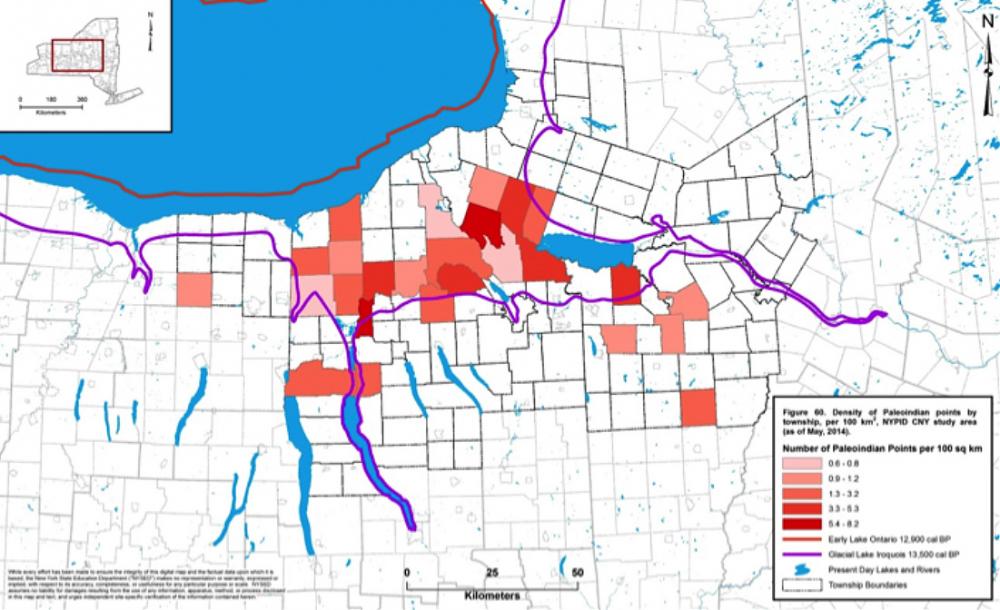
Distribution of Paleoindian points in central New York, showing greatest density on the former bed of proglacial Lake Iroquois.
Selected Publications
Lothrop, Jonathan C., Philip LaPorta, Joseph Diamond, Susan Winchell-Sweeney, and Meredith H. Younge
In Review Paleoindian Occupations in Southeastern New York: Sites and Isolated Finds in the Wallkill/Rondout Valley. In: In the Eastern Fluted Point Tradition, Volume II, edited by Joseph A.M. Gingerich. University of Utah Press, Salt Lake City.
Lothrop, Jonathan C., James W. Bradley, Susan Winchell-Sweeney, and Meredith H. Younge
2014 Paleoindian Occupations in Central New York. In: Glacial Geology of Cayuga County of the Eastern Finger Lakes: Lakes, Lore and Landforms, edited and compiled by Andrew Kozlowski and Brandon Graham. Guidebook for 77th Annual Reunion of the Northeastern Friends of the Pleistocene Field Conference, June 7-8, 2014, Auburn, New York, pp. 90-101. The New York State Geological Survey, New York State Museum and New York State Education Department, Albany.
Lothrop, Jonathan C.
2009 The New York Paleoindian Database Project: a Call for Data. New York State Archaeological Association Newsletter 5(3): 6.
Section II: Recording Data for NYPID / Contact Information
Please contact us to record data on your Paleoindian point. We can meet you at a NY state archaeological Association chapter or annual meeting, or at your home to record and photograph the point(s). Contributors can also visit us in Albany at the New York State Museum (Anthropology Collections) to have their points recorded.
Contact information:
Jonathan C. Lothrop
New York State Museum
CEC Room 3049
Albany, NY 12230
Section III: Where will the Data Go?
After we complete data forms and photography for each Paleoindian point, we enter the information on into an electronic database. Our ultimate goal is to make these data available to other researchers and interested archaeologists. To this end, we will soon begin to upload NYPID data assembled for individual regions to this NYPID web link, and also to the PIDBA site. (For site security, provenience will only be listed at the county level on these Web links.) All contributors will be acknowledged on the NYPID website, except those who wish to remain anonymous.
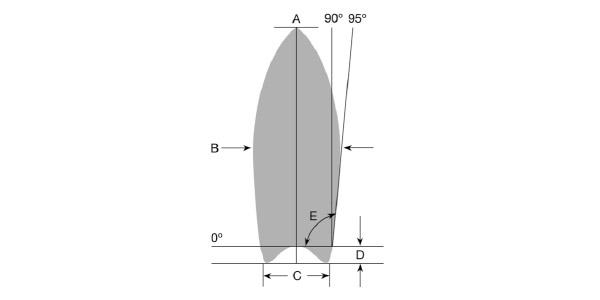
Schematic of measurements recorded for Paleoindian points, New York Paleoindian Database Project.
We encourage all members of the NY State Archaeological Association and interested persons to contribute to this effort. With your help, we can continue to build a database that is providing new insights on the first peoples of New York and their role in colonizing North America at the end of the Pleistocene.



